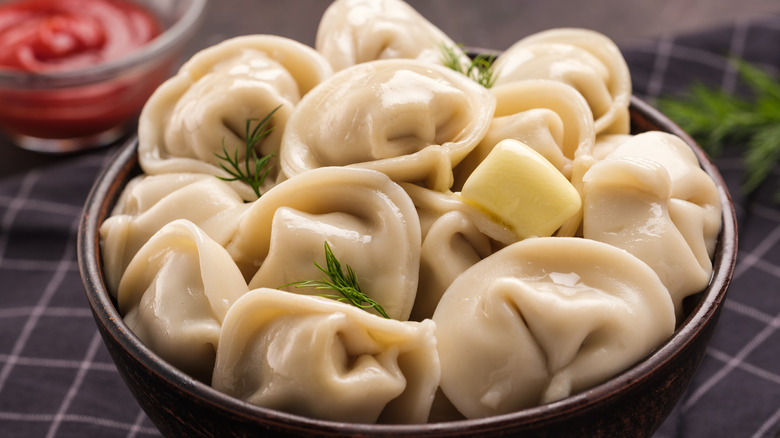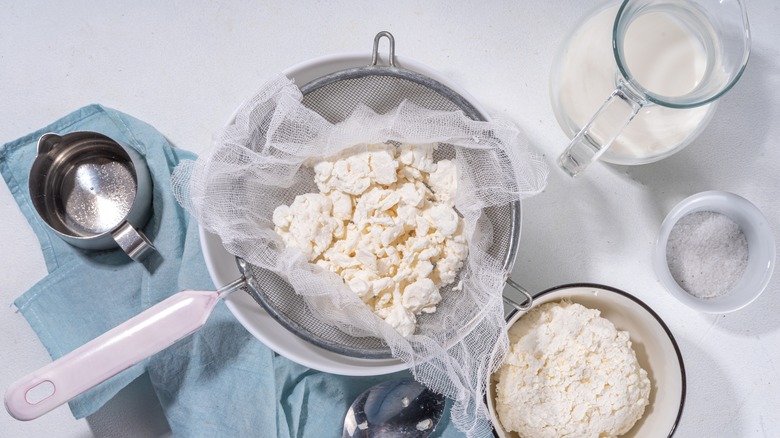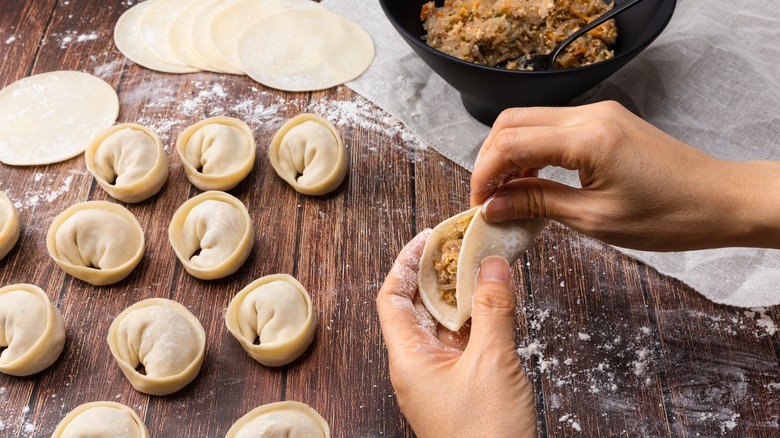The Cheesecloth Tip That Will Save You From Soggy Dumplings
While a plump dumpling might predict a prosperous year, a soggy, watery filling can bring disappointment after that first bite. To avoid dreary dumplings hitting the plate, it is time to use some cheesecloth to wring out all the excess moisture in that filling.
As the name suggests, cheesecloth was originally used to separate the curds from the whey in cheesemaking. While the fabric has various thickness grades, the material is often used to strain liquid from porous foods. Unlike a sieve or strainer, the cheesecloth can be squeezed, pushed, and otherwise manipulated to drain moisture from food.
Since excess liquid can make for soggy dumplings, cheesecloth can help drain water from cabbage, fat from pork, or other moisture from the filling ingredients. Place the food in the center of the cheesecloth, wrap tightly, and squeeze until all the moisture is removed. It can be repeated as needed. Given the material's fine holes, only the liquid leaves and the other food remains intact. Since a well-filled dumpling might bring good fortune, one that does not leak excess moisture can be a sign of a well-executed dish.
Why cheesecloth can get all the moisture out of a dumpling filling
Although moisture might be a good thing in some food recipes, too much liquid in a dumpling filling is a big mistake. While a colander might make quick work of draining pasta, the dump and strain scenario does not eliminate all the excess liquid. By using cheesecloth, the food can be squeezed, spread out, or otherwise manipulated without degrading the ingredient completely.
Since cheesecloth is designed to filter solids from liquids, the fine mesh consistency allows the liquid out. Usually made from cotton, the material would not harm or otherwise impart flavor to the food either. The durable material can mold itself around the food time and again without fear of tearing or otherwise breaking. Repeated pushing, squeezing, and straining can ensure that all unwanted liquid is removed.
If actual cheesecloth is unavailable, other similar cloth material can be substituted. For example, if a small portion is needed, medical gauze can be used since it has the same heft and hole structure. Also, muslin or other fabrics can be options. The downside with these choices is that the holes might be too small or tightly woven together, which may not allow for proper drainage.
Focus on a drier filling to avoid soggy dumplings
While a great dough and strong seal are important aspects of a well-executed dumpling, if the dough surrounds an overly moist filling, the dumpling can split its edge, crack in the middle, or otherwise disintegrate during the cooking process. It does not matter how much care is used in frying, steaming, or other cooking method. The dumpling must be well-made prior to being cooked.
A finely chopped filling not only helps to keep the dumpling together but also can have a drier texture. The well-bound mixture keeps the shape in the middle of the dumpling and makes it easier to seal the dough around it. Adding a touch of cornstarch, breadcrumbs, or even oats in the mixture can help absorb any excess liquid and make forming a tightly knit filling easier. While those ingredients can dry out the filling, they should not alter, change, or overpower the flavor in any way. Wrapping up the perfect dumpling is about keeping the moisture out and the flavor in that perfectly sealed package.


